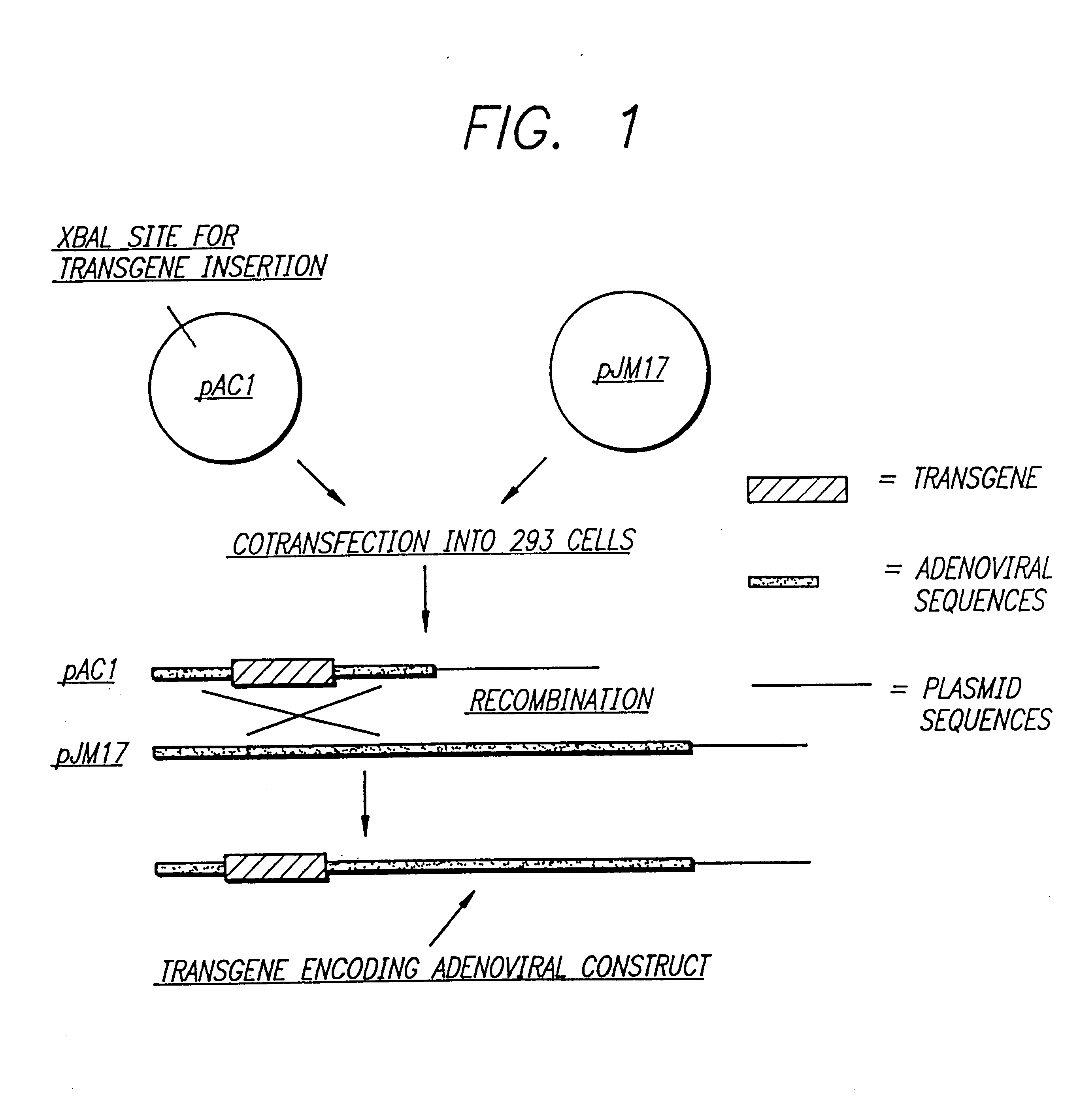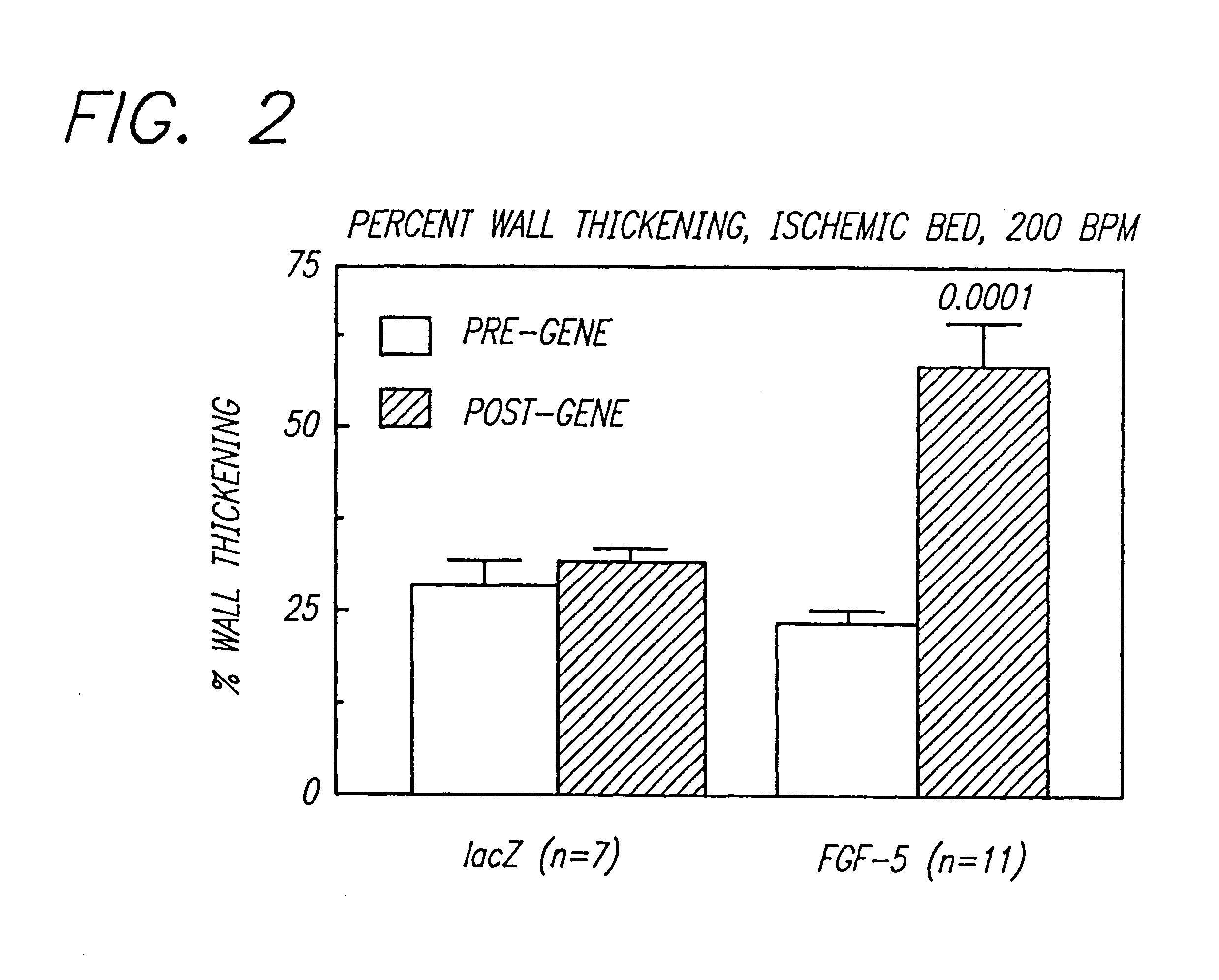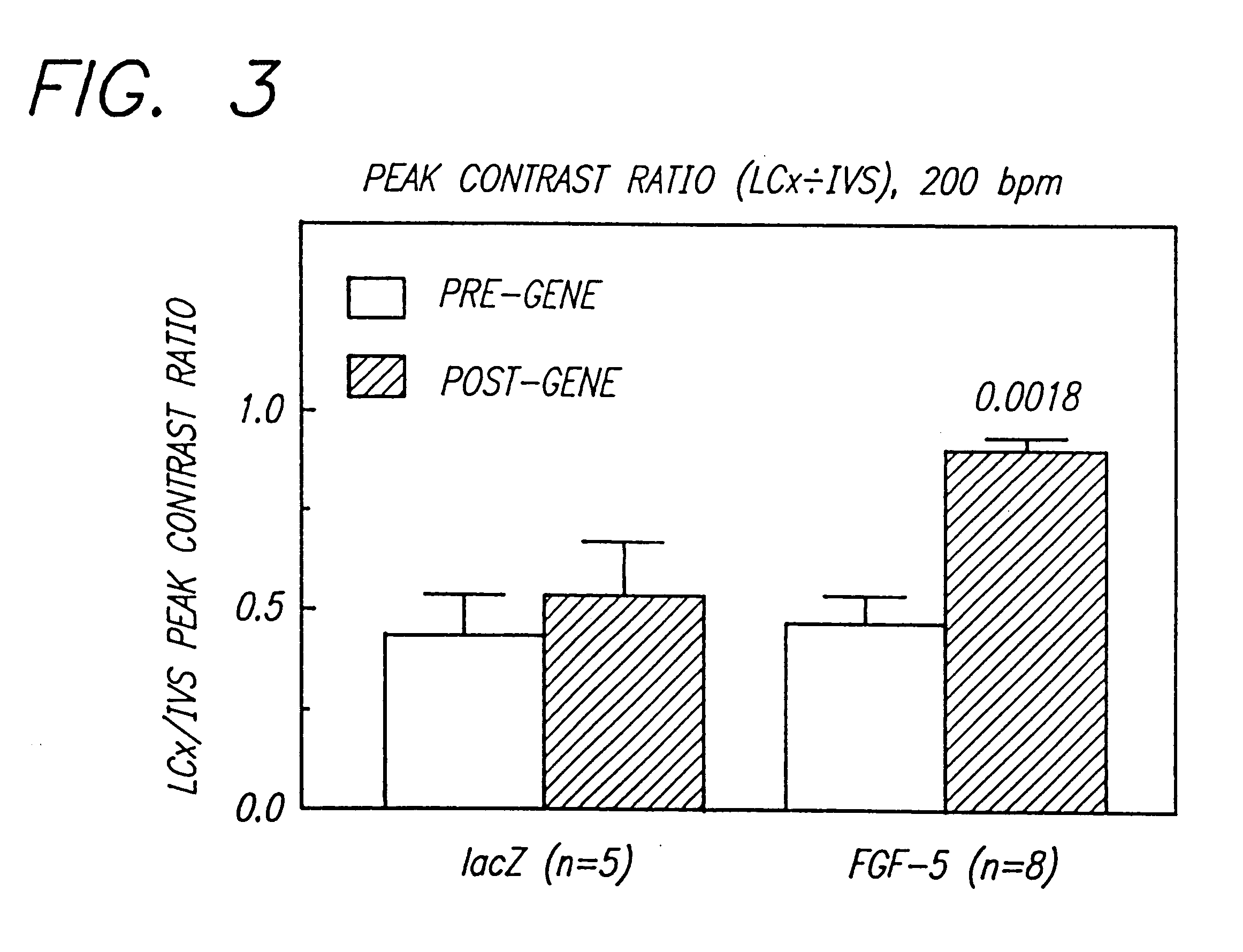Gene therapies for enhancing cardiac function
a technology of gene therapies and cardiac function, applied in the direction of viruses, drug compositions, cardiovascular disorders, etc., can solve the problems of deprived of the necessary levels of oxygen and nutrients, myocardial ischemia, and various limitations
- Summary
- Abstract
- Description
- Claims
- Application Information
AI Technical Summary
Problems solved by technology
Method used
Image
Examples
example 2
Adult Rat Cardiomvocvtes in Cell Culture
Adult rat cardiomyocytes were prepared by Langendorf perfusion with a collagenase containing perfusate according to standard methods. Rod shaped cells were cultured on laminin coated plates and at 24 hours were infected with the .beta.-galactosidase-encoding adenovirus obtained in the above Example 1 at a multiplicity of infection of 1:1. After a further 36 hour period the cells were fixed with glutaraldehyde and incubated with X-gal. Consistently 70-90% of adult myocytes expressed the .beta.-galactosidase transgene after infection with the recombinant adenovirus. At a multiplicity of infection of 1-2:1 there was no cytotoxicity observed.
example 3
Porcine Mvocardium In Vivo
The .beta.-galactosidase-encoding adenoviral vector obtained in Example 1 was propagated in permissive 293 cells and purified by CsCl gradient ultracentrifugation with a final viral titer of 1.5.times.10.sup.10 viral particles, based on the procedures of Example 1. An anesthetized, ventilated 40 kg pig underwent thoracotomy. A 26 gauge butterfly needle was inserted into the mid left anterior descending (LAD) coronary artery and the vector (1.5.times.10.sup.10 viral particles) was injected in a 2 ml volume. The chest was closed and the animal allowed to recover. On the fourth post-injection day the animal was killed. The heart fixed with glutaraldehyde, sectioned and incubated with X-gal for 16.5 hours. After imbedding and sectioning the tissue was counterstained with eosin.
Microscopic analysis of tissue sections (transmural sections of LAD bed 96 hours after intracoronary injection of adenovirus containing lacZ) revealed a significant magnitude of gene tran...
example 4
Porcine Ischemia Model
Animals included 18 domestic pigs (30-40 kg). A left thoracotomy was performed under sterile conditions for instrumentation. (Hammond, et al. J Clin Invest 92:2644-2652, and Roth, et al. J Clin Invest 91:939-949, 1993). Catheters were placed in the left atrium and aorta, providing a means to measure regional blood flow, and to monitor pressures. Wires were sutured on the left atrium to permit ECG recording and atrial pacing. Finally, an ameroid was placed around the proximal LCx. After a stable degree of ischemia had developed, the treatment group (n=11) received an adenoviral construct that included FGF-5 (an angiogenic gene), driven by a CMV promoter. Control animals (n=7) received gene transfer with an adenoviral construct that included a reporter gene, lacZ, driven by a CMV promoter.
Studies were initiated 35.+-.3 days after ameroid placement, at a time when collateral vessel development and pacing-induced dysfunction were stable (Roth, et al. Am J Physiol 2...
PUM
| Property | Measurement | Unit |
|---|---|---|
| Length | aaaaa | aaaaa |
| Flow rate | aaaaa | aaaaa |
Abstract
Description
Claims
Application Information
 Login to View More
Login to View More - R&D
- Intellectual Property
- Life Sciences
- Materials
- Tech Scout
- Unparalleled Data Quality
- Higher Quality Content
- 60% Fewer Hallucinations
Browse by: Latest US Patents, China's latest patents, Technical Efficacy Thesaurus, Application Domain, Technology Topic, Popular Technical Reports.
© 2025 PatSnap. All rights reserved.Legal|Privacy policy|Modern Slavery Act Transparency Statement|Sitemap|About US| Contact US: help@patsnap.com



